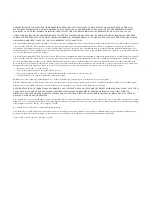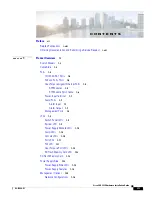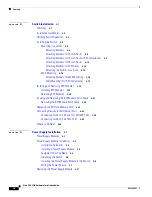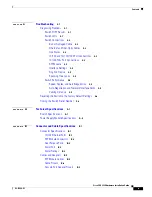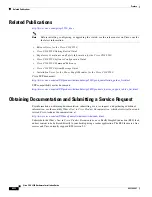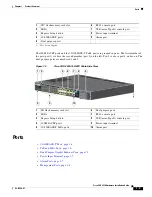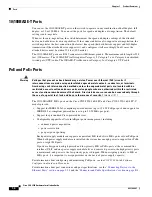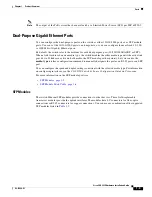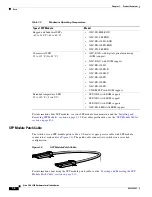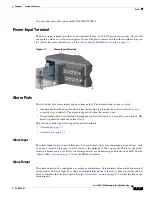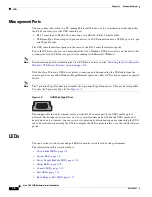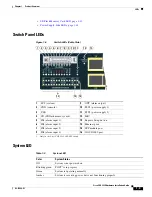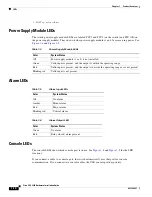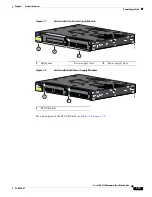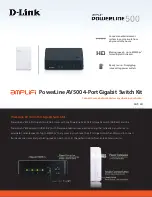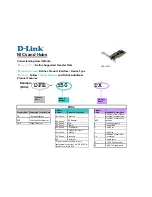
1-4
Cisco CGS 2520 Hardware Installation Guide
OL-31444-01
Chapter 1 Product Overview
Ports
10/100BASE-T Ports
You can set the 10/100BASE-T ports on the switch to operate in any combination of half duplex, full
duplex, or 10 or 100 Mb/s. You can set the ports for speed and duplex auto-negotiation. The default
setting is auto-negotiate.
When set for auto-negotiation, the switch determines the speed and duplex settings of the attached
device, and advertises its own capabilities. If the connected device also supports auto-negotiation, the
switch negotiates the best connection (the fastest line speed that both devices support and full-duplex
transmission if the attached device supports it), and configures itself accordingly. In all cases, the
attached device must be within 328 feet (100 meters).
The 10/100BASE-T ports use RJ-45 connectors with Ethernet pinouts. The maximum cable length is 328
feet (100 meters). The 100BASE-T traffic requires Category 5, Category 5e, or Category 6 unshielded
twisted pair (UTP) cable. The 10BASE-T traffic can use Category 3 or Category 4 UTP cable.
PoE and PoE+ Ports
Warning
Voltages that present a shock hazard may exist on Power over Ethernet (PoE) circuits if
interconnections are made using uninsulated exposed metal contacts, conductors, or terminals.
Avoid using such interconnection methods, unless the exposed metal parts are located within a
restricted access location and users and service people who are authorized within the restricted
access location are made aware of the hazard. A restricted access area can be accessed only through
the use of a special tool, lock and key or other means of security.
Statement 1072
The 10/100BASE-T PoE+ ports on the Cisco CGS-2520-16S-8PC and Cisco CGS-2520-16S-8PC-C
models provide:
•
Support for IEEE 802.3af-compliant powered devices (up to 15.4 W PoE per port) and support for
IEEE 802.3at-compliant powered devices (up to 30 W PoE+ per port).
•
Support for prestandard Cisco powered devices.
•
Configurable support for Cisco intelligent power management, including:
–
enhanced power negotiation
–
power reservation
–
per-port power policing
Each power supply module can support an equivalent PoE load of two PoE+ ports or four PoE ports.
When both power supply modules are installed, the system has enough power to support four PoE+
ports, or eight PoE ports.
If ports are designated as high priority and low priority PoE or PoE+ ports at the command line
interface (CLI), and one power supply module fails or is removed, power to the high priority ports
is maintained, and power to the low priority ports is dropped. When assigning priority to PoE or
PoE+ ports, it is important to assign priorities on the basis of power supply capacity.
For information about configuring and monitoring PoE ports, see the
CGS 2520 Switch Software
Configuration Guide
on Cisco.com.
For information about port connections and port specifications, see the
“Connecting Devices to the
Ethernet Ports” section on page 2-24
and the
“Connector and Cable Specifications” section on page B-1
.


